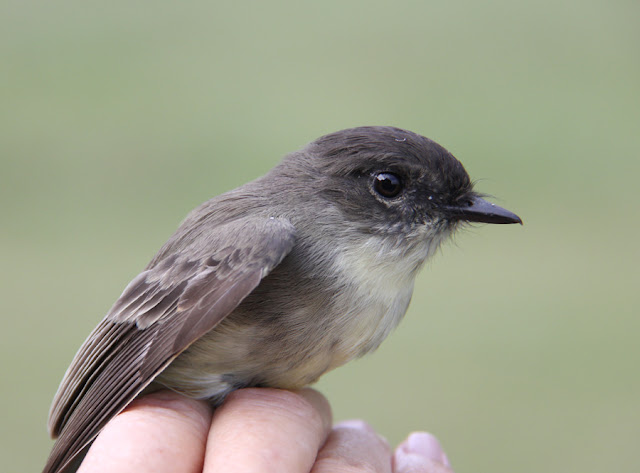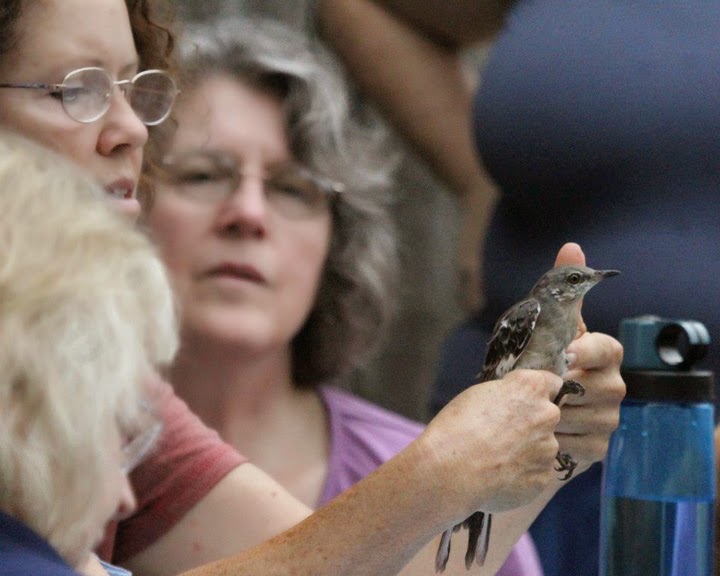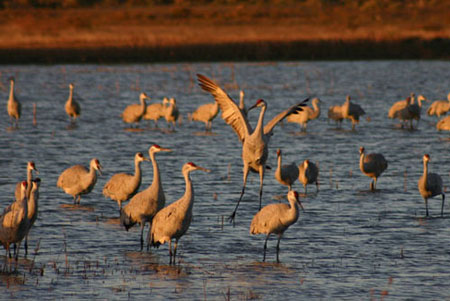
Mark Armstrong of East Tennessee Avian Research, Inc. and Master Bander of hummingbirds and songbirds, was contacted by the home owners to identify and band the hummingbird. On December 12th, Mark set up a trap and was able to capture the hummer minutes later. Above, Mark reaches through the trap door to capture the hummer.
Above, the hosts of this hummingbird watch with interest as Mark removes the hummer from the net bag prior to examination. The bag helps keep the hummer calm after capture.
Above, Mark takes wing measurements to help determine whether this Rufous is a male or female. Females have a longer wing measurement. This bird was a mature female.
Using a blunt darning needle, Mark counts the number of gorget feathers visible on the female's throat. Unlike female Ruby-throated hummers which have white throats, the females of the Rufous species often have a cluster of gorget feathers on their throat.
Photo credit: Mark Armstrong
Mark shows hosts and friends some of the characteristics that help to identify this bird as a Rufous female.
The female rests quietly for a moment before buzzing off to continue her foraging.
Even though Rufous hummingbirds have been found in the eastern United States for many years, biologists still know very little about why they migrate to the east. It is also a mystery just what geographic characteristics determine their migration routes and choice of wintering grounds. What we do know, is they have good memories and often return to the same yard the next winter.
Keep at least one feeder out this winter and you may be lucky enough to spot a wintering hummingbird! In east Tennessee, report winter hummingbird sightings to Mark Armstrong at Woodthrush@bellsouth.net or 865-748-2224.
Thank you to Billie Cantwell for sharing her great images in this blog post! All of the images in this post that are not otherwise credited were taken by Billie.
Rufous Hummer in Knoxville
Other blog posts on Wintering hummingbirds in Tennessee
In recent years, fourteen species of hummingbirds have been documented in the east during fall and winter months.
Hummingbird banding
Hummingbirds in watercolor
Hummingbird art on Vickie's Sketchbook blog
Cornell's All About Birds: Rufous Hummingbirds




































































